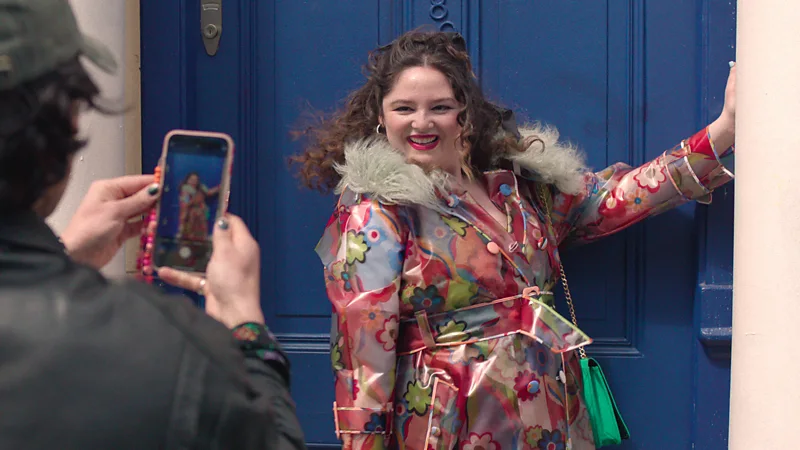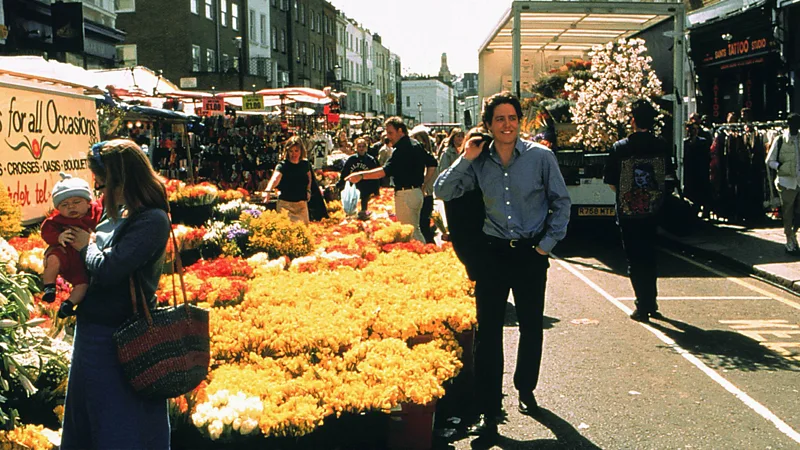
Too Much Reality: What Film and TV Often Get Wrong About London
When it comes to London, most people abroad have an image shaped by charming romcoms, stately mansions, and cobbled streets filled with posh accents and proper tea. From Notting Hill to The Crown, mainstream media has long presented a picturesque version of the UK’s capital. But the reality is far grittier and often, far more interesting.
This gap between expectation and reality is precisely what Lena Dunham tackles in her new Netflix series, Too Much. The show offers a sharply comedic and refreshingly honest portrayal of London, breaking down the idealized screen version and exposing viewers to the messy, moody, and magnetic reality of life in the city. It’s a perfect lens through which to explore what film and TV get wrong about London and why it matters.

The Notting Hill Illusion: Cinema’s Glossy London
For decades, London in film has been dominated by what critics often call the “Notting Hill version” of the city. Popularized by Richard Curtis’s 1999 romcom Notting Hill, this version of London is filled with pastel-colored townhouses, charming bookstores, and impossibly romantic coincidences.
Curtis’s other hits like Bridget Jones’s Diary, Love Actually, and Four Weddings and a Funeral reinforced this fairy tale. Even modern classics like Paddington and TV juggernauts like The Crown and Bridgerton follow suit offering up palatial estates, period elegance, and dignified walks through Hyde Park. These depictions may be delightful, but they paint only one part of a very diverse city.
In truth, the London most Londoners live in is not so polished. The city is a sprawling blend of historic charm and contemporary grit filled with multicultural vibrance, economic contrast, and urban unpredictability.

Enter Too Much: A Reality Check Wrapped in Comedy
In Too Much, Dunham flips the fantasy on its head. The protagonist Jessica, an American from New York (played hilariously by Megan Stalter), arrives in London expecting Jane Austen-style countryside or a cozy Notting Hill dreamscape. Instead, she finds herself in a cramped flat on a council estate in East London.
From the sweaty backroom music gigs to grimy pubs and grey cityscapes, the show takes viewers into areas like Hackney, Hoxton, Camberwell, and Shoreditch the real, often overlooked heartbeat of London. These aren’t the postcard neighborhoods tourists flock to. They’re the places where creativity, culture, and chaos collide in a way only London can deliver.
Too Much doesn’t just poke fun at clichés it dismantles them with love. Jessica’s mother on a video call from the U.S. sums up the disappointment many outsiders might feel: “I thought it would be so creative over there and I’d be jealous. But I’m not jealous.” It’s a moment that’s as funny as it is telling.

London Through a Different Lens: The History of Stereotyping
Film and TV have long shaped how outsiders view cities. Just as Sex and the City defined New York for millions, and Emily in Paris crafted a sugar-coated version of France’s capital, Notting Hill and its successors built a mythical London. The global popularity of these shows many of them wildly successful box office hits cements those images into the cultural imagination.
But Dunham’s Too Much is not the first to push back. Stanley Kubrick’s A Clockwork Orange showed the brutality of 1970s London. Withnail and I painted a portrait of urban squalor. And more recently, Slow Horses starring Gary Oldman has filmed in working-class neighborhoods that rarely make the cinematic cut.
These stories show a different London not less beautiful, but undeniably more real. It’s a city of contrasts, where glamor and grit live side by side.
A Love Letter to Real London
Despite its satire and self-awareness, Too Much is not a takedown of London it’s a tribute. Dunham, who moved to the city in 2021, says the show reflects her own journey from romanticized expectation to authentic connection.
“It’s about what I thought London would be,” Dunham told the BBC, “and what I actually found when I got here.” That blend of discovery, discomfort, and eventual love forms the emotional backbone of the series.
In one delightfully meta moment, Jessica visits the famous blue door from Notting Hill, squealing, “I’m Julia Roberts, bitch!” But it’s not just a parody it’s a recognition of how pop culture affects our dreams and disappointments.
Working Title, the production company behind Too Much, also made Notting Hill and Bridget Jones. Its co-founder Tim Bevan calls the new series “an antidote to Emily in Paris,” adding, “No one has done [modern London] on a big, big scale recently, in a loving way.”
The Power of Screen Myths and the Value of Breaking Them
Romanticized depictions of cities aren’t inherently bad. They help sell travel, inspire art, and lift spirits. Even Emily in Paris, despite its clichés, has brought economic and tourism benefits to France. The same could be said of Notting Hill’s continued impact on West London.
But honesty has value too. Cities are not museum pieces they’re living, breathing places filled with contradictions. When media presents only the polished version, it excludes the people and places that give cities their soul.
Too Much steps into that gap. It embraces the awkward, the grimy, and the painfully funny realities of modern urban life. It proves that the real London diverse, unfiltered, and full of stories is just as cinematic as the version we’ve been fed for decades.
Final Thoughts: A Refreshing Shift in Storytelling
Too Much is more than a TV show it’s a cultural recalibration. It urges audiences to look past the glossy facades and find the beating heart of the city. Whether it’s a record store in Dalston or a dive pub in Camberwell, the beauty of London lies in its lived-in details.
And perhaps, in showing us what film and TV get wrong about London, Lena Dunham has finally gotten it right.




Average Rating